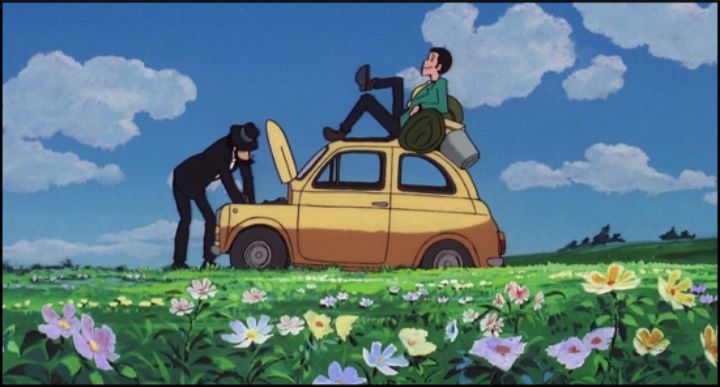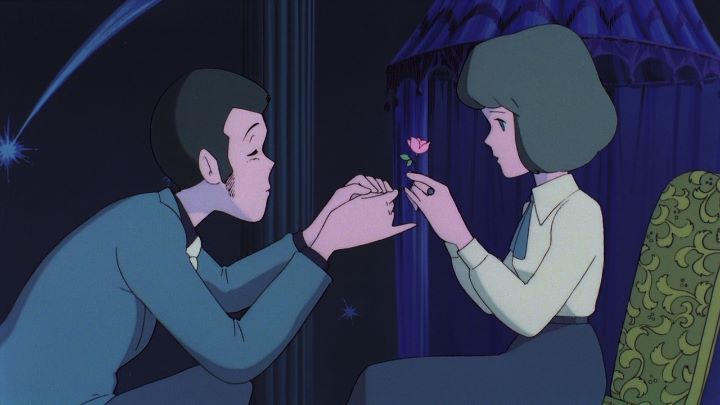








Studio Ghibli's entire catalogue of films are necessary viewing, there's little arguement to be had about that. But what films are to be included in said catalogue is a different matter. Officially, their first film under the studio banner was 1986's "Castle in the Sky," but many fans and companies (including Walt Disney Studios and GKIDS in their home video releases) include "Nausicaa of the Valley of the Wind" from 1984, created by most of Ghibli's early staff and only officially under a different company for financial backing. The conversation continues even after Studio Ghibli's closing; who is to say "Mary and the Witch's Flower" isn't a Ghibli movie, given that many of the same animators were retained for it? Back to the early days, "The Castle of Cagliostro" from 1979 may not be a Ghibli film, but it was the first directorial feature film by Hayao Miyazaki, a name synonymous with Ghibli's branding, and the success of which no doubt led to the studio we are familar with today (for that matter, all of Miyazaki's and Takahata's film and television work pre-Ghibli deserve looking up). The movie is an adventure film starring Lupin the Third, at the time growing to be a household name in Japan, on par with James Bond or Inspector Gadget in the USA. It's a decidedly different type of story to what the charming thief Lupin is known for, featuring an older and more weathered hero as a gentleman thief rather than simply a comedic trickster with a love for money and women. This poses a problem: to die-hard fans, "Cagliostro" simply isn't a Lupin film. But whatever side of that argument you might take, it's hard to disagree that it is a fantastic film, easily surpasing the countless other Lupin adventures in writing and directing, with the added boon that it can be enjoyed by children and adults alike.The production values may look dated, but they also hold up surprisingly well in terms of watch-ability. This can be seen from the opening moments when Lupin, along with his partner-in-crime and sharp shooter Jigen, run off from a casino with huge bags of cash in a beat-up yellow buggy. It's a brief but fun sequence as the chasers find their own cars tampered with as the thieves drive off, laughing as they go, only to realize quickly that the casino's cash was full of counterfiet bills, and proceeding to throw their worthless gains out the window into the air across a busy city bridge. Lupin still has a charm about him, but is clearly a little more mature than he is known for, and has grown used to successes and failures to accept each as they come. The source of the fake cash is rumored to come from a large estate outside of town, one Lupin personally remembers with a connection to his youth, and they find a bride trying to escape from captors of the castle owned by the Count of Cagliostro. Multiple goals collide on the same path centered around the castle, with Fujiko Mine (notably older and more independent as an undercover reporter that doesn't rely on her physical charms) and Inspector Zenigata (not quite as bumbling or frantic as he is often depicted) each coming to the estate with their own motivations.But above all the story themes is Lupin's promise to the girl, forced to be wed in only a few days. Trapped in order to unlock some hidden fortune and at the height of her dispair, she needs a knight in shinning armor to whisk her away. Lupin doesn't look the part, but he sees the need to play it for the bride's sake, promising to rescue her. He uses theatrics and improvised magic tricks to sell himself as a stranger she can trust in, kneeling and encouraging her to "believe in the thief" to save the day. This makes the adventure feel as much a fairy tale as any of Disney's best stories, while maintaining a grounded logic to prevent the viewer from being taken out of the experience. While it takes its time for pacing to breathe, it still finds opportunity to be fun in ways Lupin should be. It's a great balance that pays off in spades.  Again, the animation manages to come off as timeless rather than dated, still a pleasure to watch today as much as it was yesterday. There exist three English dubs for the film, both available on a recent Discotek Bluray release along with the original Japanese, and while the Japanese dub is the best, it is fascinating to listen to each for the differences in translation and delivery. If "The Castle of Cagliostro" was considered one of Ghibli's, I would consider it one of my personal favorites even among them. It's that good. If you haven't seen any of Lupin the Third and only have time for one adventure, this is the one to recommend. If you DO have time for others and want to be faithful, there are definitely other films that would better portray the character as he is known. And if you simply want a good adventure to rival the classics, this should be at the top of your list.
Again, the animation manages to come off as timeless rather than dated, still a pleasure to watch today as much as it was yesterday. There exist three English dubs for the film, both available on a recent Discotek Bluray release along with the original Japanese, and while the Japanese dub is the best, it is fascinating to listen to each for the differences in translation and delivery. If "The Castle of Cagliostro" was considered one of Ghibli's, I would consider it one of my personal favorites even among them. It's that good. If you haven't seen any of Lupin the Third and only have time for one adventure, this is the one to recommend. If you DO have time for others and want to be faithful, there are definitely other films that would better portray the character as he is known. And if you simply want a good adventure to rival the classics, this should be at the top of your list.